May 2022: Educational jurney to Tanzania and Kenya
I wrote a detailed report about my first study trip to another continent, where antelopes were the main subject: https://www.mammalwatching.com/wp-content/uploads/MB-Tanzania-and-Kenya-in-May-2022.pdf

The south-eastern Bushbuck (Tragelaphus sylvaticus) is good to see in the open areas of Arusha National Park in the evening.
July 16, 2018: Announcement of the winners of the INTERNATIONAL PALEONTOLOGICAL ILLUSTRATION CONTEST
The painting “Barroisiceras onilahyense“, an ammonite of Cretaceous Madagascar, has gotten the first price in the category “Amateur Fossil Drawing”. The illustration contest was part of the 5th International Paleontological Congress in Paris from July 9-13, 2018.
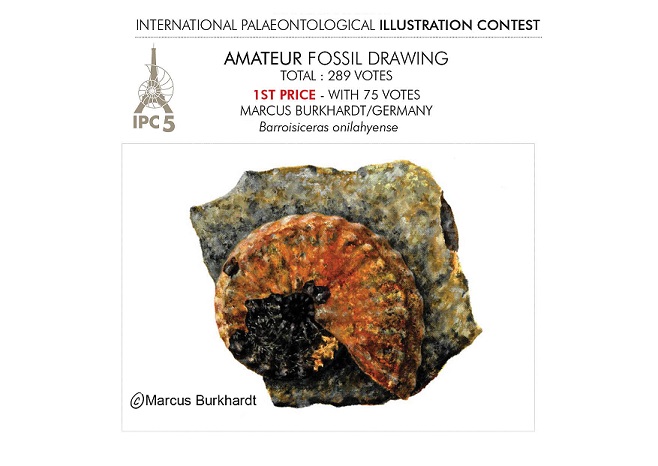
July 3, 2017: Inspection of the ruin Wysburg in the thuringian district Saale-Orla-Kreis
To discuss a reconstruction project I met deputies of the “State Office for preservation of ancient monuments and archaeology Thuringia“ and the association “Weisbach e.V.“ at the ruin of the medieval weir system Wysburg near Weisbach. It was a spur castle that was built at the end of the 13th century by the advocates of Gera and was destoyed less than a hundred years later, probably during the Vogtland war in 1354.
Today the basement of the building is completely excavated. The rest of the old walls were bricked up a mite with a boundary layer of roof tiles. The archaeological discoveries are for example ceramic figures, probably toys, and trebuchet projectiles with a weight up to 81 kg shot from a western plateau near Neuenbeuthen during the siege. Information boards on several points of the ruin content exciting insights of the castle, for example the process of the slighting after the conquest.
Some of the findings, demonstrative models, reconstructions and boards with explanations of the medieval life are to see at the museum in the nearby village Weisbach, which was the conclusion of our conference.
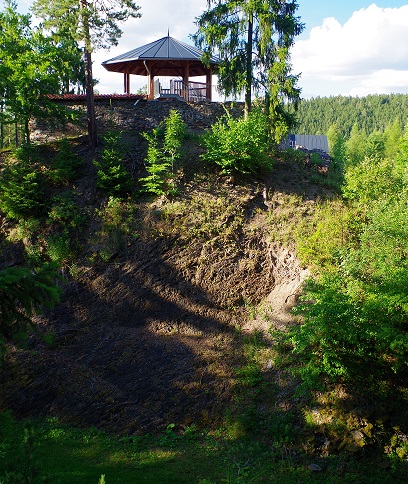
View over the neck ditch on the rest of the shield wall. The polygonal roof protects the bottom of the donjon which was once about 28 metres high. In the rock left below is a small trail which ends in a small ditch underneath the inner bailey. Right below there are stacked stones which were probably stored for more construction works.
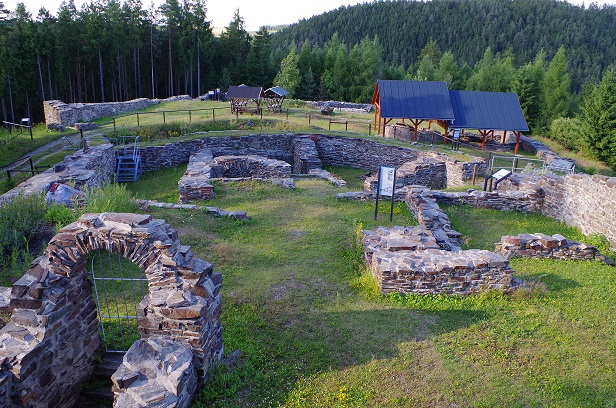
View from the position of the donjon on the area of the castle. In the foreground there was the inner bailey with residential buildings, in the background the outer bailey with service rooms, for example the rests of the baking oven and the bakehouse, both protected with umbrella roofs. The scarce cultivation of the outer bailey perhaps means that it wasn’t finished before it’s destruction.
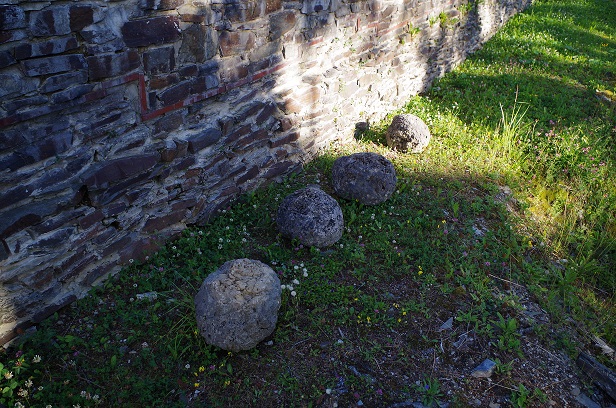
Some of the trebuchet projectiles which are found during the excavation. In the wall the boundary layer of roof tiles isolates the original from the new masonry.
For more information about the facility look here: www.wysburg.de
June 24, 2017: Vernissage of „MoVo – Moderne Vogelbilder“ (modern bird painting) in Halberstadt
„Moderne Vogelbilder“, a unique exhibition in Germany, in the museum Heineanum near the cathedral of Halberstadt is now open to gaze at predominantly naturalistic paintings and drawings. There were a few lectures at the vernissage and the award of the „Silberner Uhu – Deutscher Preis für Vogelmaler“ (Silver eagle owl – German price for bird painters), which goes to Elke Gröning with her picture „Family Takahe“ this year. The speakers also talked about ecology, art and ornithology.
The viewing of the exhibition has uncovered which large quantity of good bird painters are living and working in Germany. There are 50 artists with overall 109 pictures, which are to see until 8. Oktober 2017. In the exhibition catalog, which is available by the Heineanum, is pictured respectively one work of every artist. Next to the well-known painters, who are present since many years, there are a lot of artworks made by newcomers.
The pictures „Encounter with Aepyornis maximus“ and „Roseate spoonbill (Platalea ajaja)“ made by myself were also chosen by the jury for the exhibition. I could talk to the visitors especially about the first one because elephant birds are little-known on the contray to the moas. But this should not be the only example. Beside the local birds there are a lot of exotic species. Particularly this diversity, not only of birds, also of artistic techniques and ideas, inspires and connects artists and nature lovers similary.
Here You can find more information and photos about the exhibition:
www.heineanum.de/de/movo-silberner-uhu.html
May 6/7, 2017: A painting workshop with Eugen Kisselmann in Seehausen-Schönberg / Altmark
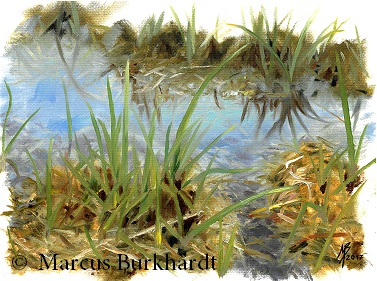
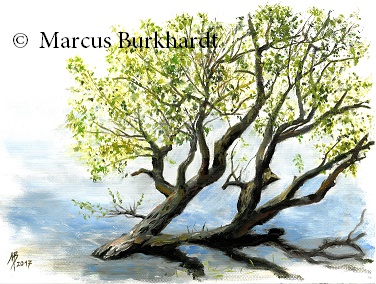
Reed mannagrass (Glyceria maxima) and silver willow (Salix alba)
After getting to know the russian wildlife artist and landscapist Eugen Kisselmann by the exhibitions „MoVo“ and „Art & Vielfalt“, whose pictures I favor especially in the realistic painting community, I used the chance to make a two-day workshop with him this spring. On Saturday morning I was introduced to the studio of the artist before we did a short inspection of the habitat behind the house, where we also painted later. There already were a lot of species to observe, like the common shelduck (Tadorna tadorna), the western yellow wagtail (Motacilla flava) and roe deer (Capreolus capreolus), to name just a few examples. Also I found a suitable position to paint: a small cutout of a shore with reed mannagrass (Glyceria maxima) was just in accordance with my ideas. It belongs to the Herzfelder Haken, a backwater. I got my materials and took a seat to paint this motif with oil on paper. Of course this stew was sketchy. The ambition was to depict the liveliness and diversity of such a small piece of nature. The artistically instruction was very professional by decades of experience on the part of the teacher. The day was accompanied by birdsong and craking frogs – a common kingfisher (Alcedo atthis) also flew over the water – and endet up in a talk about the pictures developed today and a survey of Mr. Kisselmann’s prior works.
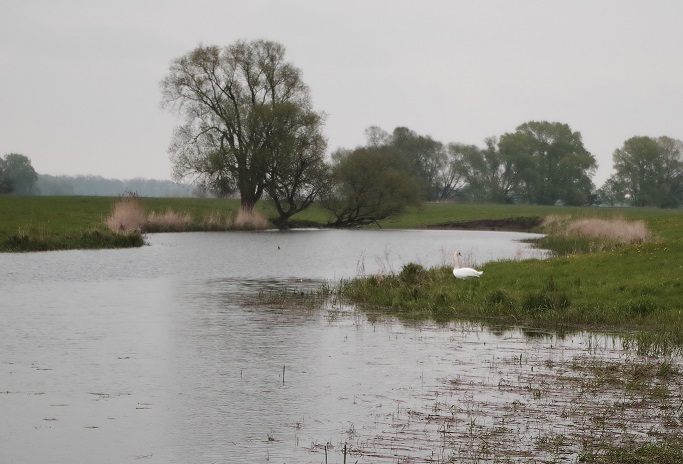
Herzfelder Haken near Seehausen-Schönberg with mute swan (Cygnus olor)
On Sunday we began to paint directly. This time we walked a few hundred metres along the backwater, until we reached a place with silver willows (Salix alba), from which one became the motif for my picture. Once again it was about light, colours, shape and finally the overall expression, less about details. Across from us we had the chance to observe the common kingfisher by its return from fishing in its cave, where it fed the chicks. At the end of the day I bought the illustrated book of Mr. Kisselmann, which I can recommend every enthusiast of realistic art, just as the painting workshop.
Registrations here: www.eugenkisselmann.de
August 20/21, 2016: Follow Zdeněk Burian
Because of the great painter, graphic artist and illustrator Zdeněk Burian (1905-1981) we made a jurney through Czech Republic this weekend. Three art fans from Dresden travelled with me across Prague and Brno until far in the east of the country. Destinations of this trip were the Anthropos-Pavillon and the Moravian State Museum, both in Brno, and the Zdeněk Burian Museum in Štramberk.
The complete works of the artist from Moravia are very polymorphic in their subjects and contain thousands of pictures. Because of his international presence as “old school” paleoartist he became one of the biggest person of influence in this subject.
On Saturday Brno was planned, that baited first of all with a special exhibition about primeval times in the Anthropos-Pavillon, an outpost of the Moravian State Museum. Here was the focus on the paintings of the master beside a few fossils and information boards about Earth and science history. The paintings are well known by Burian fans because of their availability in many books about prehistory from the DDR and afterwards (it must be said that this books were released in many other countries). It was surprising to see that the pictures in this books are not nearly as good as the original paintings. Seeing the artwork is worth either one knows the illustrations. The pictures shown scenes of the strange life of the Paleozoic across the time of the dinosaurs to primitive elephants and other mammals. After this exhibition we moved to the Palais Dietrichstein, where unfortunately no original Burian art was to see, but a lot of interesting things about archaeology, paleontology and mineralogy. After that we moved to Příbor, where we spent the night.
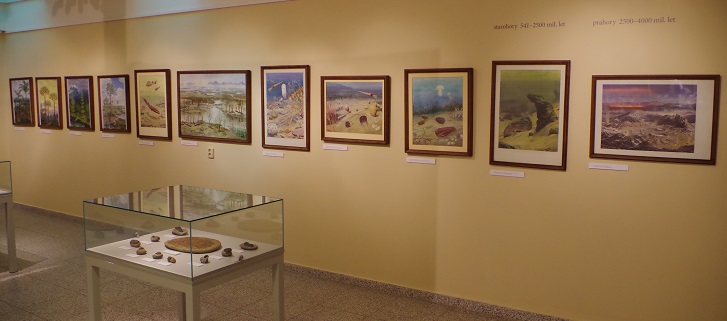
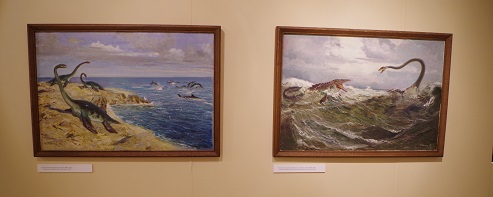
Anthropos-Pavillon in Brno
On Sunday morning we visited the Zdeněk Burian Museum in Štramberk. Here we had an insight into the work of the artist that never reached the international attention like his pictures about prehistoric times. I think because of this I didn’t know the exposed original artwork before. There were for example ethnological studies and illustrations for adventure stories painted on paper. The museum is relatively small, the Burian exhibition takes only a loft. Nevertheless this travel destination was worth the trouble. A lot of new impressions about this outstanding artist were collected. Furthermore several catalogues and posters with his motifs are well-priced offered. The exhibition catalogues are worth because most works they contain are rarely to see outside of Czech Republic.
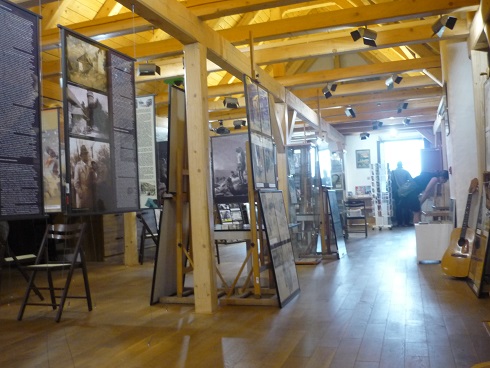
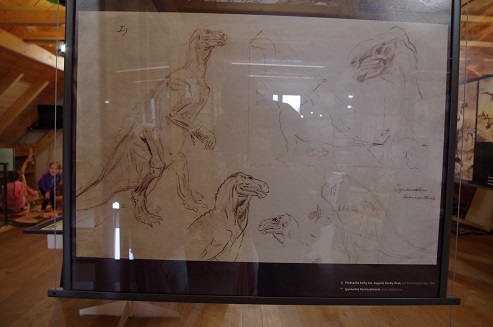
Zdeněk Burian Museum in Štramberk
More information about the Zdeněk Burian exhibitions: